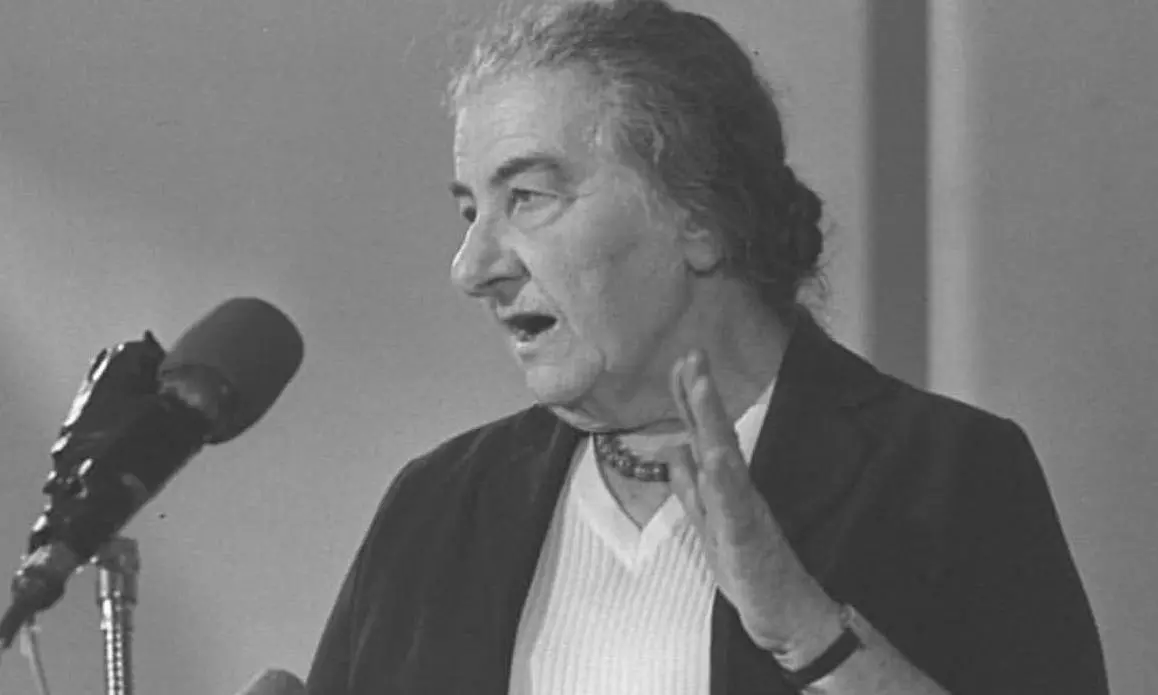
‘Iron Lady’ Golda Meir: The former Prime Minister adopted a hard-line policy of not negotiating with terrorists in hostage situations (X Photo)
Explained | Israel’s no-bargaining policy: How effective has it been?
Despite its supposed hard-line policy, Israel has negotiated with various Palestinian militant groups to secure releases

After Hamas took Israel by surprise raining a barrage of rockets, numbering anything between 3,000 and 5,000, on the southern cities of the country in a well-coordinated multi-front assault launched from the Gaza Strip, Israel is faced with a situation where an unknown number of its security personnel and civilians have been taken hostage by the Palestinian militant group.
The Israeli defence forces launched a full-scale war against Hamas within Israel’s borders to take on the militants, who had entered 15 miles from the Gaza border across 22 locations, and beyond to pummel the Gaza Strip which is home to Palestinian resistance against Israeli occupation.
Hostages on both sides
Although the Israeli military has also captured a large number of Hamas militants, during the 'Operation Iron Swords’, media reports suggest that according to the military leadership, the number of civilian and military personnel taken hostage by Hamas would shape the future of the present conflict.
It means Israel may be forced to come to the negotiation table and secure the release of its security personnel and civilians in a quid pro quo.
The country has been at war with Palestinians ever since it came into being in 1948 and has seen many hostage situations right from the Munich Olympics to this day.
‘No bargaining’ with terrorists
As a state policy, Israel does not negotiate with terrorists for the release of hostages and prefers to conduct military rescue operations to free them. The policy was adopted by Israel’s ‘Iron Lady’ Golda Meir in the early 1970s and has been followed up with zeal by various prime ministers, like Yitzhak Rabin, Simon Peres and incumbent Benjamin Netanyahu, among others.
The tough stance taken by the country’s leadership in the 1970s and ’80s created for Israel an image of a country that does not bargain with terrorists for the release of hostages.
The cost of the ‘no-bargaining’ policy
However, the policy has come at a colossal price in terms of human lives. When members of Black September, a sister outfit of the Palestine Liberation Organisation (PLO), took 11 members of Israel's Olympic team hostage during the Munich Olympics in 1972, Meir refused to negotiate. The militants had asked for the release of 236 prisoners, most of them Palestinians, in Israeli custody. Her refusal led to a bloodbath, as the militants killed all team members.
Another well-known hostage situation of the decade was the Coastal Road massacre that took place six years later in 1978. Eleven terrorists of the Fatah group landed on Kibbutz Maagan Michael using rubber boats and took 71 hostages, including 30 children, demanding the release of five Palestinian prisoners. The rescue operation led to the terrorists killing 38 civilians, including 13 children.
How effective is the ‘no bargaining’ policy?
Despite its image as a state that takes on terrorists in hostage situations notwithstanding the price it has to pay, Israel has negotiated the release of its citizens and security personnel from the mid-1980s. Here are some of the prime examples of its deviation from the policy:
• In November 1983, Israel released 4,765 Lebanese prisoners in exchange for six infantry soldiers who had been captured by the Fatah group during the Lebanon war. The country also released 65 terrorists along with them.
• In October 2011, Israel released 1,027 convicted terrorists in exchange for one of its soldiers, Gilad Shalit, who was kidnapped by Hamas and kept in Gaza for five years. Among those released were many who had been convicted for life for murdering Israeli citizens.
Experience shows that every hostage situation is dealt with keeping in view the cost it involves.

